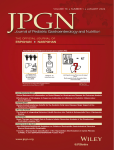Reproducibility of the 13C-Octanoic Acid Breath Test for Assessment of Gastric Emptying in Healthy Preterm Infants
ABSTRACT
Background:
The 13C-octanoic acid breath test has been used to measure gastric emptying in preterm infants, but the reproducibility of the test has not been evaluated in this population.
Methods:
Fifty-six paired breath test analyses were performed on 28 healthy preterm infants 1 to 5 days apart using the same food type, volume, and energy content for each paired sample. Breath samples were taken before the feeding, at 5-minute intervals after feeding for 30 minutes, then each 15 minutes for 4 hours. Samples were analyzed using an isotope-ratio mass spectrometer, and 13C recovery was used to calculate values for gastric-emptying coefficient and gastric half-emptying time.
Results:
There was no significant difference between test results on different days in the paired samples studied. Gastric-emptying coefficients for the first and subsequent samples were 2.6 ± 0.1 (mean ± SEM) and 2.7 ± 0.1, respectively, and half-emptying times were 44.5 ± 3.7 minutes and 41.4 ± 3.2 minutes.
Conclusion:
The 13C-octanoic acid breath test is a reliable, noninvasive, and reproducible measure of gastric emptying in preterm infants that should have wide application for use in this population.




